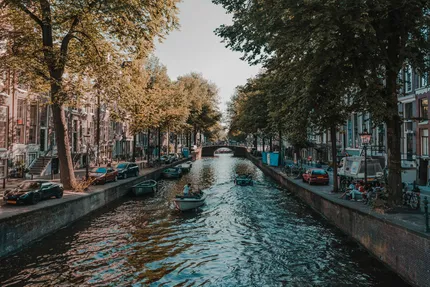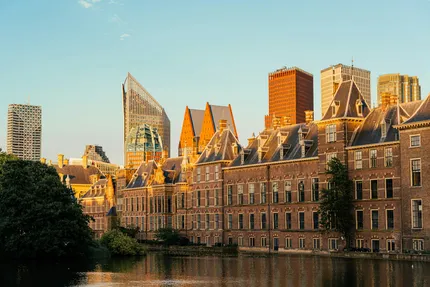CityTouring
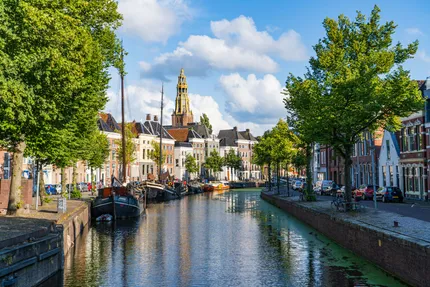
City trip to Groningen
NetherlandsNorth of the Netherlands, Groningen is a lively university city that pairs medieval streets with striking modern architecture. At its heart rise the Martinitoren and the Grote Markt, ringed by terraces and weekly produce markets. Just beyond, the boldly cantilevered Forum Groningen offers panoramic views from its rooftop and hosts films, exhibitions, and a design-forward library. Along narrow canals, brick warehouses and gabled houses sit beside contemporary landmarks like the Groninger Museum, a colorful postmodern complex showcasing art, design, and regional history. The center is largely car‑free and flat, making it ideal for walking and cycling; rental bikes are plentiful.
Green spaces such as Noorderplantsoen provide a calm loop for joggers and picnics, while boat tours reveal the city from the water. After dark, Groningen’s student population fuels a late‑running bar and live‑music scene around Poelestraat and Oosterstraat, with venues like Vera and Simplon drawing international acts. With frequent intercity trains and a handsome 19th‑century station, Groningen makes a compact, culture‑rich base for a short break, with day trips to the Wadden Sea coast, fortified Bourtange, and bird‑filled Lauwersmeer within reach.
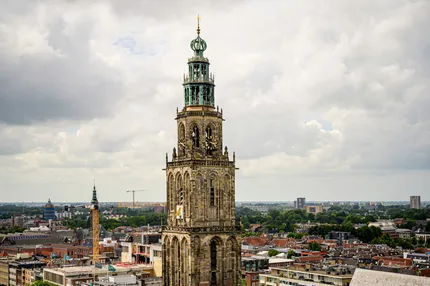
Martinitoren & Grote Markt
Climb Groningen's 15th-century Martinitoren for far-reaching views over the compact, lively center. The adjacent Grote Markt is the city's social heart, lined with cafes, historic facades, and weekly markets. Together they anchor orientation, offer great photo vantage points, and reveal the city's blend of heritage and student energy in one central, walkable area.
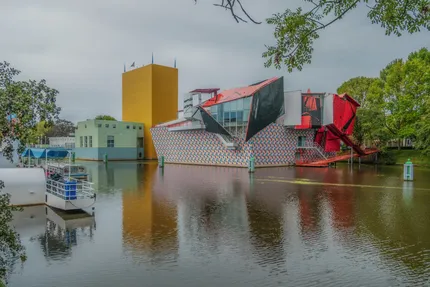
Groninger Museum
Boldly designed beside the station, the Groninger Museum showcases contemporary art, design, photography, and regional history. Expect striking temporary exhibitions alongside strong permanent collections, interactive displays, and family-friendly programming. The building itself is a destination, reflecting Groningen's creative spirit. Combine a visit with a stroll over the bridge to the canals and city center.
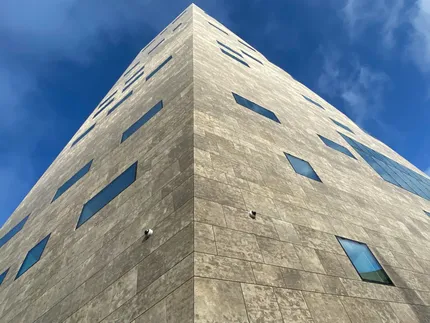
Forum Groningen
Forum Groningen is a striking cultural hub with a library, exhibitions, cinema, Storyworld museum, makerspaces, and cafes. Ride the long escalators through dramatic atriums to a rooftop terrace with sweeping city views. It's a great all-weather stop, mixing architecture, learning, and leisure, and sits steps from the Grote Markt in the historic core.
Short city breaks in Groningen suit travelers who value compact, bike-first urban exploring and a lively, youthful culture. First‑time visitors to the Netherlands who prefer an alternative to Amsterdam will find a historic core that’s easy to grasp in two or three days, with signature sights like the Martinitoren, Prinsenhof gardens, and the Groninger Museum close together. Culture and design fans can add Forum Groningen and Storyworld, while live‑music lovers target nights at Vera or Simplon and, in January, the Eurosonic Noorderslag showcase.
Food‑minded visitors can browse the Tuesday, Friday, and Saturday markets on the Vismarkt, try local snacks such as the eierbal, and sample northern craft beer at Brouwerij Martinus or Baxbier’s waterside taproom. Families will appreciate safe cycling, a relaxed canal boat tour, the hands‑on University Museum, and picnic space in Noorderplantsoen. Active travelers can rent bikes for flat rides to Paterswoldsemeer’s lakeside paths or follow the Reitdiep toward scenic villages.
Nature‑inclined guests can day‑trip to bird‑rich Lauwersmeer or the seal rehabilitation center in Pieterburen; history buffs can visit the star‑shaped fort at Bourtange. Night owls who like late hours will enjoy the dense cluster of bars around Poelestraat and Oosterstraat. Budget travelers benefit from student‑friendly prices and hostels, and photographers get rooftop cityscapes from the Forum. If you want walkability, contemporary culture, and easy side trips, Groningen fits well.
Three top reasons for a city trip to Groningen
- Climb the 97-meter Martinitoren for sweeping city views, wander the Grote Markt and A-Kerk, admire Forum Groningen's rooftop panorama, and explore the striking, color-blocked Groninger Museum designed by Alessandro Mendini.
- Experience a lively, student-driven scene: bars along Poelestraat and Peperstraat buzz nightly, independent venue Vera champions new music, SPOT/De Oosterpoort hosts concerts, and festivals Eurosonic Noorderslag and Noorderzon energize Groningen.
- Cycle effortlessly on dedicated lanes to Reitdiephaven's colorful waterfront and Paterswoldsemeer, picnic in Noorderplantsoen, stroll the Prinsenhof Renaissance garden, and taste eierbal, mustard soup, and jenever at the Vismarkt market.
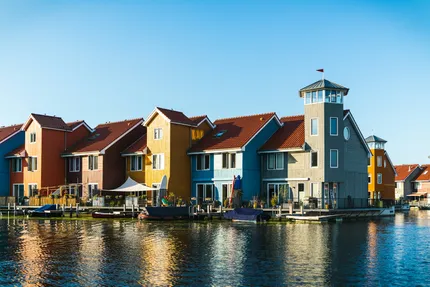
Best time to visit Groningen
Late spring to early autumn is the sweet spot. May and June bring long daylight, mild temperatures, and blooming parks, ideal for cycling and canal tours without summer crowds. July and August are pleasantly warm and, because many students leave town, the center feels relaxed while terraces are in full swing. September often stays dry and lively as the academic year resumes, adding concerts and events. Winter is atmospheric but short on daylight and can be windy and wet; visit then for museums and cozy cafés, or for the January Eurosonic Noorderslag music festival if you don’t mind brisk weather.
More activities and things to see in Groningen:
Historic Canals & Boat Tour
Explore Groningen's historic waterways around Hoge and Lage der A, lined with brick warehouses, quays, and gabled facades. A guided canal boat tour explains trading history, bridges, and modern life on the water. It's a relaxed way to see key sights, take photos, and grasp the city's development from medieval port to student town.
Noorderplantsoen Park
Noorderplantsoen is a leafy linear park on former ramparts, popular with joggers, picnickers, and students. Curving paths, ponds, and mature trees make it an easy break from the center. In late summer, the Noorderzon festival brings performance and food. Bring snacks, rent a bike, or simply people-watch among locals enjoying the green space.
Prinsentuin (Prince's Garden)
Hidden behind the Prinsenhof, the Prinsentuin is a well-kept Renaissance garden with geometric hedges, a fragrant rose garden, and a sundial. It's a peaceful pause within minutes of the market squares, with a seasonal tea house. Visit in spring or summer for blooms, or enjoy trimmed structure and calm on cooler days.
Der Aa-kerk and A-Kerkhof
Der Aa-kerk is a handsome Gothic church near the canals, long tied to Groningen's merchants. Its spacious interior now hosts exhibitions and concerts, and the surrounding A-Kerkhof streets retain warehouses, cafes, and views over moored ships. Check event schedules; even without entry, the exterior and neighborhood illustrate the city's commercial past and present.
Vismarkt & Korenmarkt
Browse Vismarkt and nearby Korenmarkt on market days for cheese, fish, flowers, produce, and fresh stroopwafels. Saturdays are busiest; Tuesdays are smaller. It's ideal for quick, inexpensive snacks and people-watching. Try local specialties like Groninger koek or herring, and note the surrounding facades that show centuries of commerce in this compact, lively area.
University Museum (Universiteitsmuseum)
The University Museum presents science, medicine, and cultural history through engaging displays, from anatomical collections to early computing and student life. Exhibits connect Groningen's academic heritage with modern research, and are accessible without specialist knowledge. It's a manageable visit near the faculty buildings, good for families and curious adults, with occasional temporary shows and events.
Reitdiephaven
Head to Reitdiephaven for its photogenic, colorful wooden houses around a small marina on the city's edge. It's a quick bike or bus ride from the center. Stroll the boardwalks, grab coffee, and shoot reflections at sunset or on calm mornings. The area adds a different, modern waterfront feel to a Groningen itinerary.
Museum aan de A
Museum aan de A, housed in historic warehouses by the canal, explores Groningen's relationship with water, trade, and daily life. Formerly the Northern Maritime Museum, it now blends maritime collections with city stories and changing exhibitions. Expect models, artifacts, and local perspectives that contextualize the quays and boats you see along the Hoge and Lage der A.
Folkingestraat & Synagogue Groningen
Walk Folkingestraat, a lively shopping street with poignant Jewish heritage markers and public art recalling wartime deportations. Visit the restored Synagogue Groningen nearby for exhibitions and community history. The area mixes independent boutiques, cafes, and remembrance, offering context beyond the main squares and a good route between the station area and the historic center.
Getting around in Groningen
Central Groningen is compact, flat, and designed around cycling and walking. Protected bike lanes, traffic-calmed streets, and abundant bike parking make a bicycle the fastest way to move around; rentals and station-based OV-fiets are easy to find. The historic core is largely pedestrian-priority, and most sights are within a 15–20 minute walk or ride. City buses, including the high-frequency Q-link corridors, connect key districts, the University, UMCG, Zernike campus, and Park-and-Ride sites to the center. Services run late on weekdays and with night routes on weekends. Pay with contactless bank cards via OVpay, the OV-chipkaart, or buy day tickets in the Qbuzz app. Regional trains operated by Arriva from Groningen Centraal reach nearby towns such as Haren, Assen, Delfzijl, Roodeschool/Eemshaven, Winschoten, and Veendam. Park-and-Ride hubs (Hoogkerk, Haren, Kardinge, Euroborg) are efficient if you must drive, but a car is unnecessary and parking in the core is costly. Taxis and car-sharing exist for late hours or special trips. Overall, bikes plus buses cover nearly all needs.
Getting to Groningen
The nearest airport is Groningen Airport Eelde (GRQ), about 15 km south of the city; it has limited, mostly seasonal routes, so most travelers fly via Amsterdam Schiphol (AMS). From Schiphol or Amsterdam Centraal, frequent Intercity trains run to Groningen every 30 minutes via the Hanzelijn, taking about 2h05–2h20, with no reservation required. If you land at Bremen (BRE) or Hamburg (HAM), you can reach Groningen by FlixBus or by regional trains via Leer/Bad Nieuweschans, though ongoing bridge works may require a rail-replacement segment. From Belgium, France, or the UK, take Eurostar/Thalys to Amsterdam, then transfer to the Intercity toward Groningen. Domestic links are excellent: Intercity services from Utrecht, Rotterdam, and The Hague connect at Zwolle, and there are direct trains from Lelystad/Almere. Long-distance buses (FlixBus, BlaBlaCar Bus) link Groningen with Amsterdam, Utrecht, Bremen, Hamburg, and occasionally Berlin, often at lower cost than rail. International driving is straightforward via the A7 motorway, but parking constraints make park-and-ride a better option.
